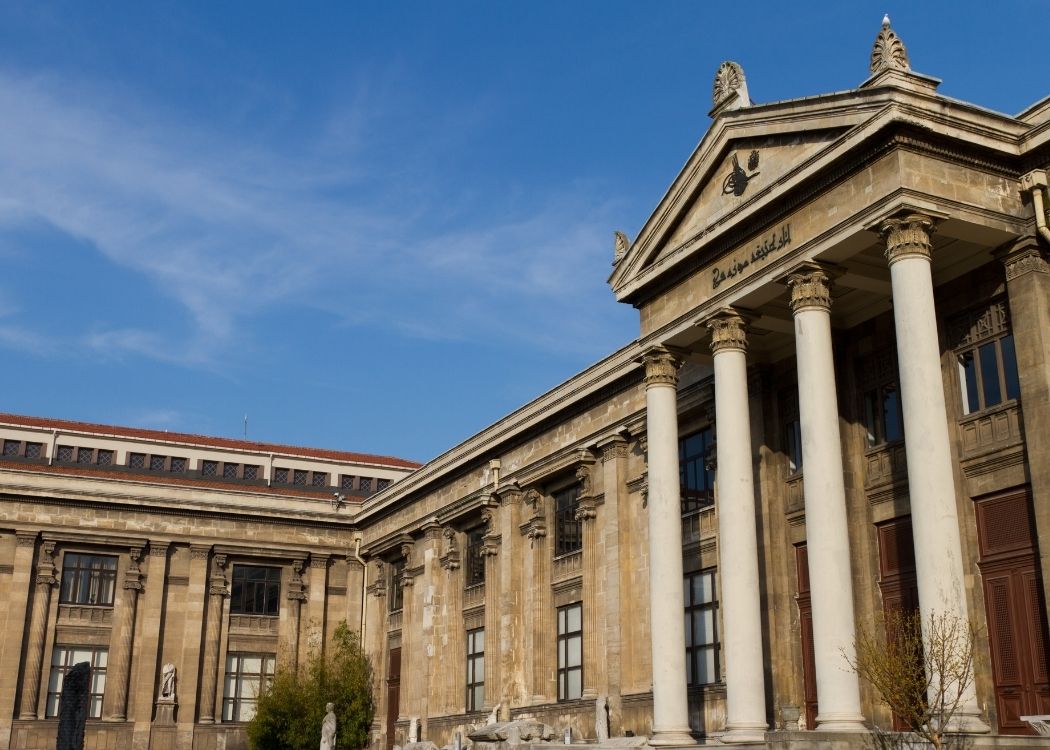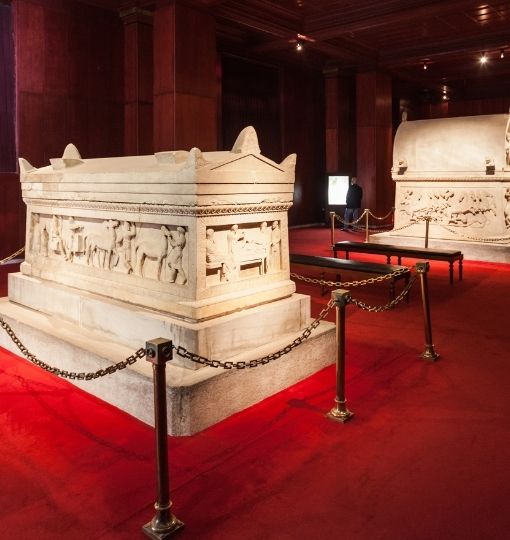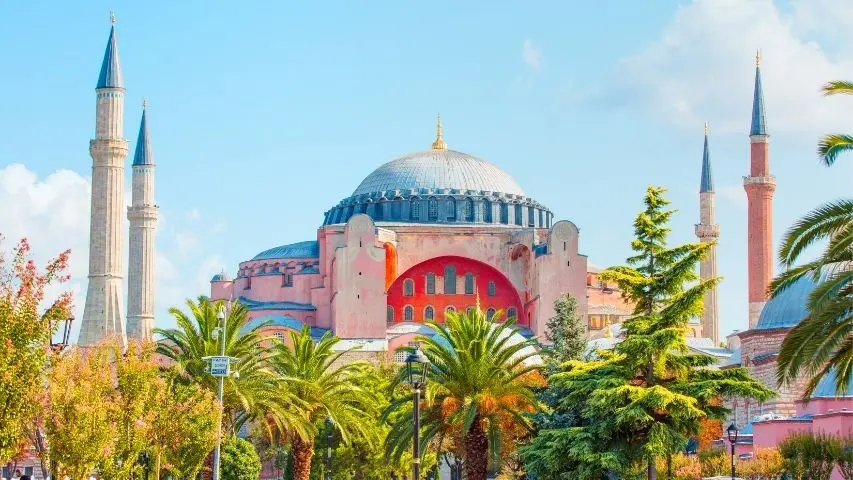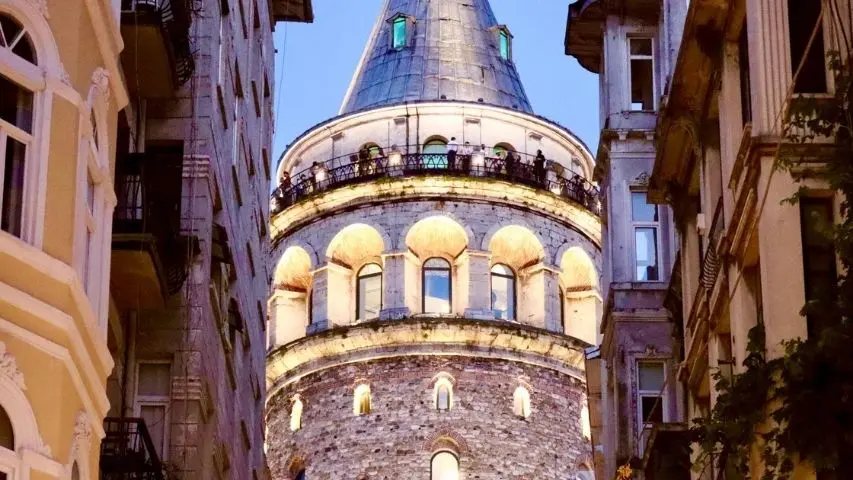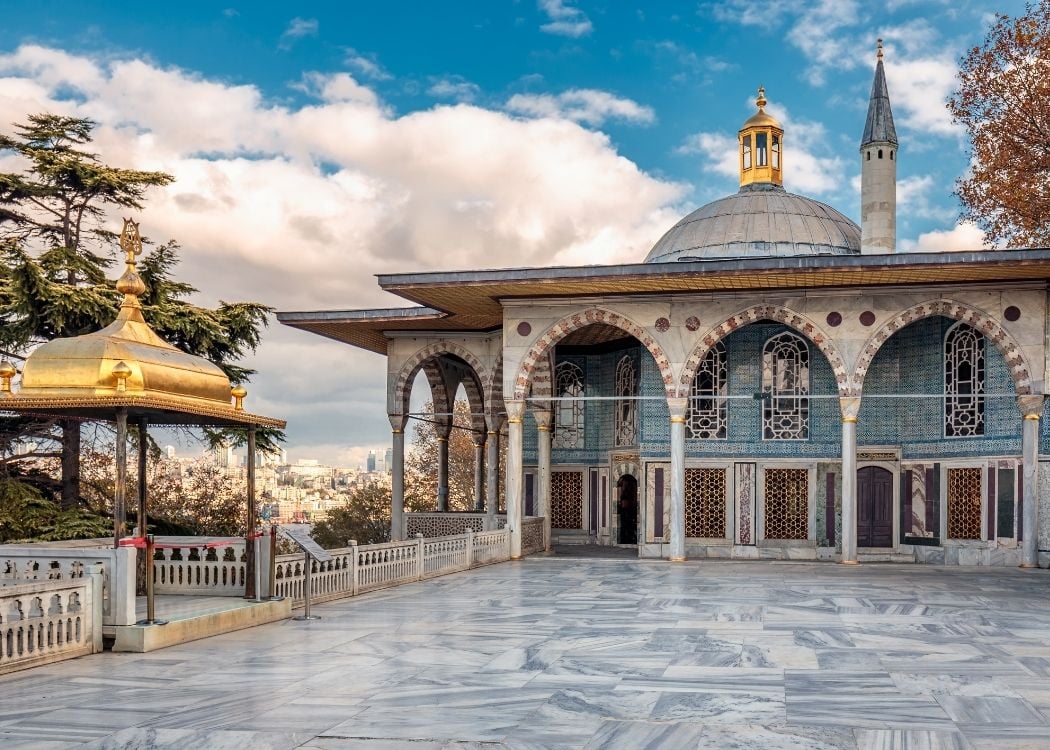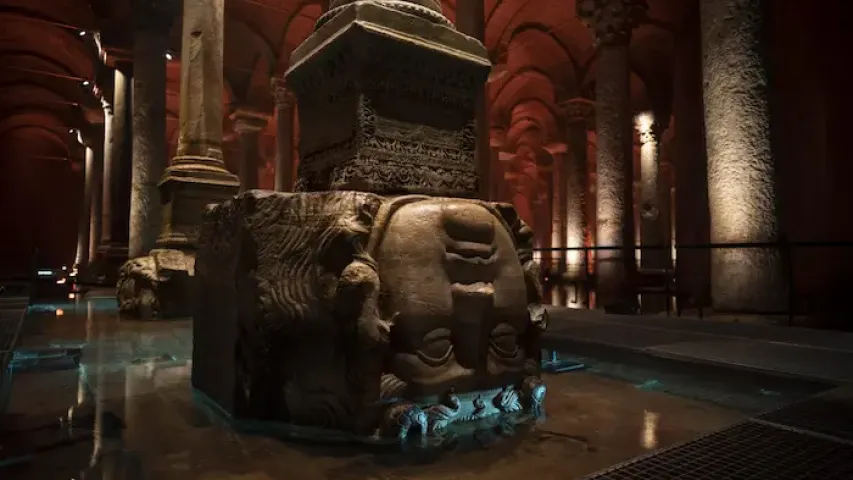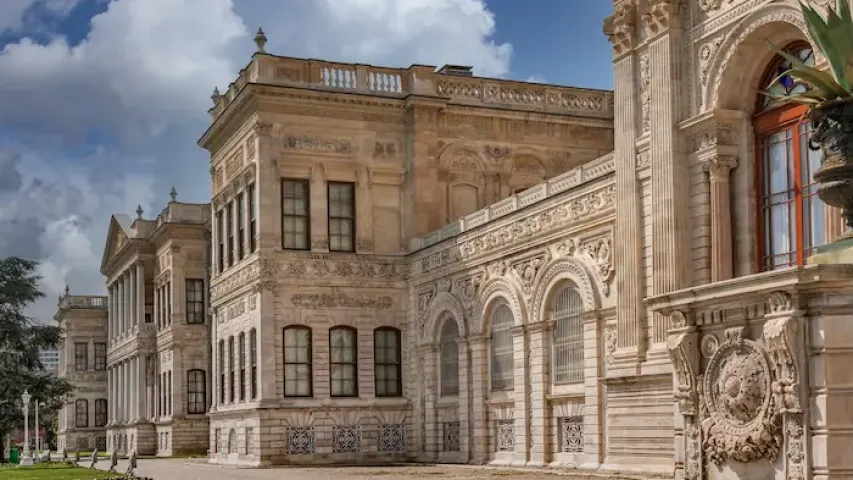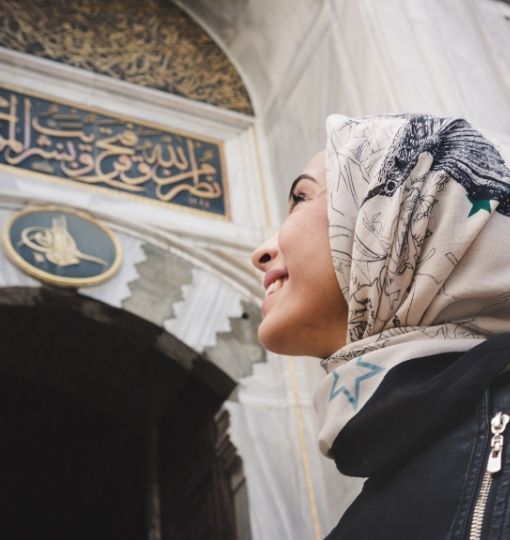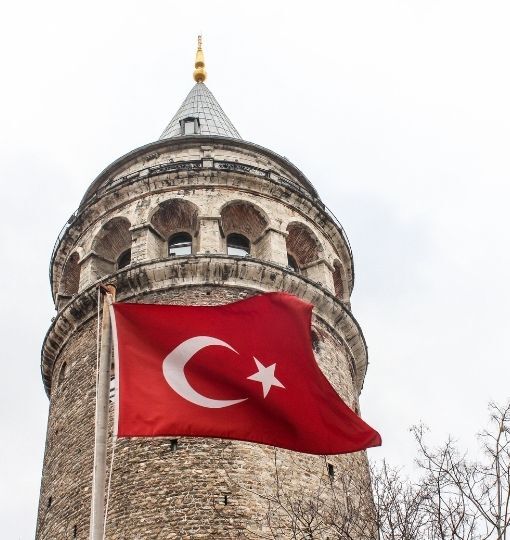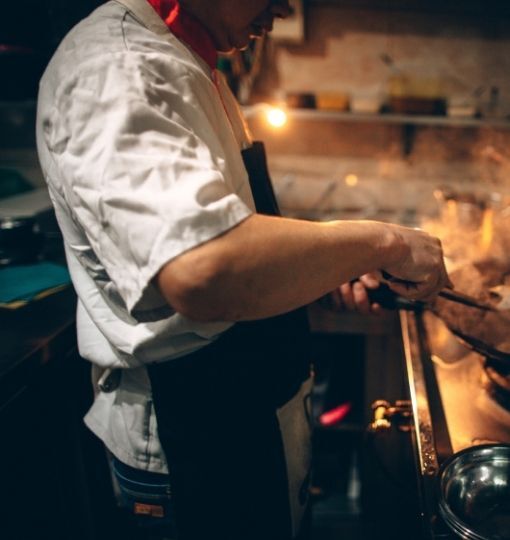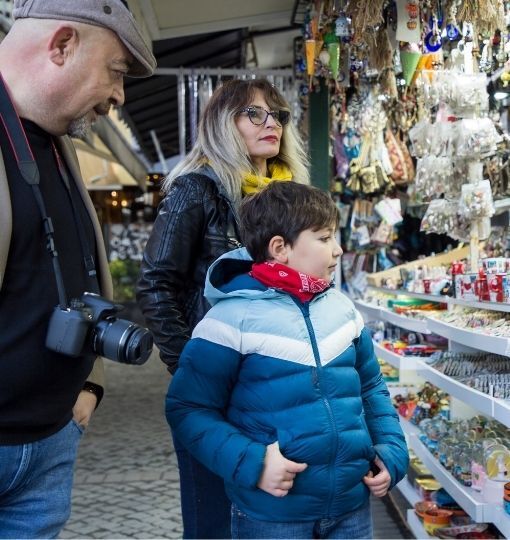One of the most impressive points of Istanbul is undoubtedly the Istanbul Archaeological Museums. Thousands of artifacts from a wide geography ranging from the pre-Islamic periods of Anatolia to Mesopotamia, Greece, Egypt and the Arabian Peninsula await their visitors here. This museum is a treasure trove for archaeology enthusiasts and offers the opportunity to travel deep into the past with each of its works. With the skip-the-ticket-line online tickets with an audio guide feature offered by Istanbul Tourist Pass®, you can enter for free and have an efficient and enjoyable tour accompanied by a professional tour guide.
Istanbul Tourist Pass® is a digital travel pass for tourists exploring the city. It includes over 100 popular tourist attractions, such as the Hagia Sophia and the Blue Mosque, and different experiences, such as the Flying Dress Photoshoot. Tourists can save money over 50% and time by purchasing 1, 2, 3, 4, or 5-day passes, depending on the duration they plan. With Skip the Ticket Lines, pass holders can pass through many tourist attractions without waiting in ticket queues, and since they enter the museums with their instant QR ticket, they do not waste time in the entrance queues.
About the Istanbul Archaeological Museums
The Istanbul Archaeological Museums is like a treasure chest for history and culture enthusiasts. This museum, which offers you a journey to a thousand years of history with its rich collection, is a true paradise of history and culture. Legendary Anatolian Civilizations, artifacts from the ancient Greek and Roman Periods, and the cultural richness of the Middle East are waiting for you here. The Istanbul Archeology Museum will fascinate you with its valuable artifacts, each of which tells its own story.
This museum has three main units: The Archaeological Museum, the Museum of Ancient Oriental Art, and the Tiled Pavilion Museum. Istanbul Archaeological Museums is Turkey’s first museum and this museum contains nearly a million artifacts from various cultures brought from the lands of the empire.
History of the Istanbul Archaeological Museums
The Istanbul Archaeological Museums is an important establishment that bears the traces of the first museology in Turkey. The interest in collecting historical artifacts dates back to the period of Mehmed the Conqueror. However, the institutional birth of museology started with the establishment of Muze-i Humayun (the Imperial Museum) in 1869. The archaeological artifacts collected in the Hagia Irene Church form the basis for the Istanbul Archaeological Museums. The Imperial Museum was re-established by German Doctor Phillip Anton Dethier, in 1872. However, when a new building had to be built due to lack of space, the Tiled Pavilion was converted into a museum and opened to visitors in 1880.
Turkish museology entered a new period with the assignment of master painter and archaeologist Osman Hamdi Bey as museum director in 1881. Hamdi Bey's excavations at home and abroad led to the discovery of world-famous artifacts. A larger museum building is needed to exhibit these artifacts. On this request, the Istanbul Archaeological Museums, a new museum building built by Alexandre Vallaury, was opened to visitors on June 13, 1891.
The building known as the Museum of Ancient Oriental Arts was built by Osman Hamdi Bey as the Academy of Fine Arts and later devoted to museums. The classical building of the Istanbul Archaeological Museums opened in 1891, is a center where many important artifacts are exhibited. Now, let's start exploring and take a journey into the depths of history.
Architecture of the Istanbul Archaeological Museums
The Istanbul Archaeological Museums was built at the end of the 19th century as one of the impressive examples of Ottoman architecture. Bearing traces of the neoclassical style, the building displays a fascinating appearance, reflecting the aesthetic understanding of that period.
The exterior of the main building reflects distinctive features of elegant Ottoman architecture. Large domes, finely embroidered decorations, and arches make visitors feel the majesty of the Ottoman Empire. The museum building has a remarkable facade design. The high-arched entrance door impresses visitors with its fascinating details and elegant decorations. In addition, the reliefs and decorations on the outside of the building provide visitors with interesting details that tell historical and mythological stories.
The interiors of the museum are also dazzling. The interior of the building is full of large and spacious halls. The frescoes on the ceilings, mosaics and marble decorations on the walls reflect the intricate details of Ottoman period architecture.
First Step into the Istanbul Archaeological Museums
As you close the entrance of the Istanbul Archaeological Museums, the first place that affects you is the large courtyard. The courtyard is decorated with statues, columns and other archaeological artifacts from various periods. Trees and other plants in the courtyard add liveliness to the museum. The main entrance of the Istanbul Archaeological Museums has a wide door flanked by an impressive staircase. While this door invites visitors to the mysterious atmosphere of the ancient world, the details on it reflect a rich history and art heritage.
The museum complex consists of three main sections: the Archaeological Museum, the Tiled Pavilion and the Museum of Ancient Oriental Arts. The Archaeological Museum, located at the entrance, is the main building and houses the main collection. This magnificent building, bearing traces of history and art in every detail, makes a valuable contribution to the cultural heritage of Istanbul.
What to See in the Istanbul Archaeological Museums
We invite you thousands of years ago, to the world of ancient civilizations in this magnificent place where you step to discover the historical richness of Istanbul. The Istanbul Archeology Museum is ready to impress and amaze you with its world heritage collection. The Istanbul Archeology Museum is located in the heart of the city, right next to Sultanahmet Square. You can spend more time thanks to the museum being divided into three sections.
The Archaeological Museum
This section is an area where works from the Ancient Greek, Roman and Byzantine periods are exhibited. Many ancient artifacts such as statues, sarcophagi, coins and ceramics obtained from excavations in Anatolia and surrounding countries are located here.
Osman Hamdi Bey brought many artifacts to Istanbul with the excavations he carried out in various places, including the sarcophagus of Alexander the Great. The museum contains works from prehistoric times to the Ottoman Period. Featured artifacts such as the Tomb of "Crying Women" (Sarcophagus of the mourning women), the Lycia Tomb and the Tabnit Tomb are also exhibited.
The Museum of Ancient Oriental Art
In the magnificent corridors of the Istanbul Archaeological Museums, the Ancient Orient Museum section hosts a unique collection reflecting the rich cultural heritage of the wide geography. This unique area light on the deep history of the Middle East and its surroundings.
The museum is full of rare artifacts from a wide geography stretching from the pre-Islamic Arabian Peninsula to Anatolia, from Egypt to Mesopotamia. Artifacts from the pre-Islamic Arabian Peninsula are enriched with sculptures and ceramics reflecting the religious and cultural life of the region. Mesopotamian Artifacts attract attention with important works bearing the traces of humanity's first civilizations. Unique artifacts such as the Stele of Akkadian King Naramsin, the Treaty of Kadesh, and the Ishtar Gate are also included in this section.
The Tiled Pavilion Museum
The Tiled Pavilion Museum, the oldest building in the Istanbul Archaeological Museums complex, was built by Mehmed the Conqueror. It welcomes its visitors with its architecture reflecting the Persian style and a columned portico decorated with magnificent mosaic tiles. The pavilion contains many examples of Turkish tiles and ceramics from the Seljuk and Ottoman periods.
The interior of the Tiled Pavilion attracts attention with its six rooms and central hall filled with rare examples of Turkish tiles and ceramics. The museum's rich collection includes approximately 2000 works dating back to the 11th-20th centuries. In particular, works such as the tile mihrab of Karamanoglu Ibrahim Bey Imaret, dated 1432, and the Ab-i Hayat Fountain, built in 1590, impress visitors.
The Tiled Pavilion section of the Istanbul Archeology Museum is open to those who want to discover Istanbul's rich cultural and architectural heritage. Here, you can look back on the glorious days of the Ottoman Empire and see magnificent examples of Turkish art.
The Istanbul Archaeological Museums invite history and culture enthusiasts to a fascinating journey. This magnificent complex, the first regular museum of the Ottoman Empire, contains a rich and deep historical heritage. The Archaeological Museum is a treasure for anyone who wants to follow the traces of the past. It offers visitors the mysterious world of ancient civilizations and artifacts from imperial lands.
Note: Istanbul Archaeological Museums is open to visitors while the Tiled Pavilion and the Museum of Ancient Oriental Arts are currently under construction.

